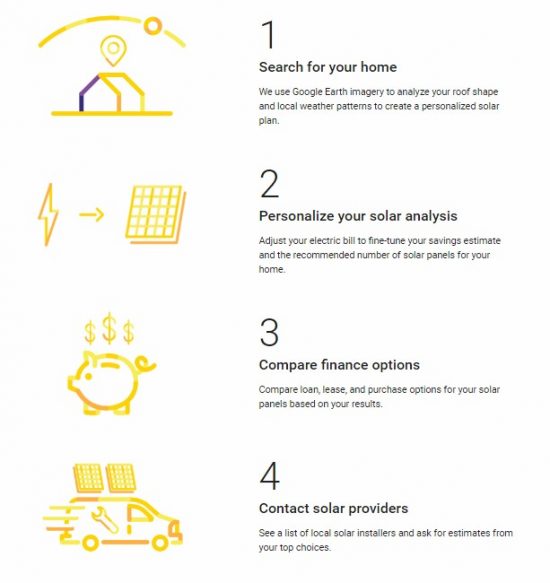March 17, 2017 – Back in 2015, I wrote about the launch of a Google initiative to assess the solar capacity of the roofs across the United States. At the time Project Sunroof coverage included Massachusetts and Northern California. Using imagery from Google Maps and Google Earth, the program calculated the total amount of sunlight hitting roofs over a year and estimated the potential energy that could be produced on these surfaces with standard photovoltaic panels installed.
This week Google announced that the data was now available for all 50 U.S. states. Google’s research concluded that 79% of roofs across the country are viable for solar. In the states of Hawaii, Arizona, Nevada and New Mexico, 905 of homes had roofs suitable for installing panels. In more northerly states such as Pennsylvania, Maine and Minnesota, the results showed more than 60% of roofs were viable.
The city with the most solar potential is Houston with an estimated almost 19,000 Gigawatt-hours of rooftop solar capacity per year. The remainder of the top 5 includes Los Angeles, Phoenix, San Antonio and New York.
If you are contemplating installing solar panels then this is a must-see site. The data and computing resources Google has put into the project will help anyone calculate an optimal solar plan. Visit the site and enter your address and zip code to get a roof analysis which combines a number of data sources plus imagery and 3D modeling. Data sources other than Google’s imaging, modeling and shadow casting include:
- Weather data from the National Renewable Energy Laboratory (NREL)
- Utility electricity rates and solar incentives data from Clean Power Research, federal, state and utility sites
- Solar pricing data from the Open PV Project, California Solar Initiative, and NY-Sun
- Solar Renewable Energy Credit (SREC) data from SRECTrade, Bloomberg, and state authorities
The end result is an accurate picture of the solar energy potential of a home or building that takes into account, not just the shadows cast by trees and nearby buildings, but also the position of the Sun year round and historical cloud and temperature pattern data.
Project Sunroof calculates the optimal energy footprint for a roof and runs the numbers on the price of panels, purchase options such as leasing, loan or cash, and produces a final cost. The application includes taxes and tax credits, both federal and state, utility rebates, renewable energy credits and net metering. There is even a database of solar providers who can install and service the panels.
Google’s plan is to map the solar energy potential of the entire globe. We will keep an eye on the rollout of this effort.










